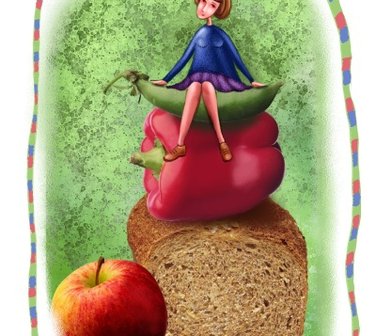Winterproof your mental and physical health
Grey skies can mean grey minds. A shift to winter and its cold weather and lack of sunlight can trigger behavioural, psychological and biological changes that play on our moods.
And in cities such as Perth where summer can seem endless and there are few natural cues such as falling leaves to remind us to start winterproofing our body, we tend not to invest any time in getting ready and taking steps to prevent slipping into an unhealthy hibernation mode.
Waking up to winter, there are different degrees to how we are affected, ranging from feeling down in the dumps to being less active, less social, less productive at work and generally letting healthy habits lapse. Ongoing low mood can require discussions with a GP and treatment, but only rarely is depression solely related to or directly triggered by the change in seasons.
“We recognise winter is a stressor for a lot of people, ” said Greg Murray, convenor of clinical psychology programs at Swinburne University.
“It is also pretty clear in most temperate climates, Australia included, that there is this average drop in mood and energy. Not everyone gets it. In Australia it is about 20 per cent.
“Not surprisingly, there are all sorts of cultural things we have done to deal with this — the winter holiday for example.”
Known as the winter blues, this general drop in mood and energy could also be accompanied by an increased desire to sleep, as well as cravings for carbohydrates and fatty foods, and often led to a decrease in exercise and weight gain, while also feeling flat and reducing social activity.
“Those people are showing the physical signs of this seasonality pattern but not flicking into depression, ” Associate Professor Murray said.
“They are the sort of people who we can just make simple behavioural suggestions on how they could handle that. For example, make sure you exercise, make sure you keep up your socialising. The types of things that keep people well most of the time.”
The extreme form of this pattern of lowered mood and energy in winter was Seasonal Affective Disorder (SAD), recognised as a rare type of seasonal-related recurrent depression. This needed to be treated similarly to non-seasonal depression, with the addition of light therapy.
“While winter SAD is most common in the northern hemisphere and appears to be rare in our temperate climate, research has shown that around 1 in 300 of the Australian adult population experiences SAD-like symptoms.
“One of the explanations for it is some people have a vulnerability whereby if they do not receive enough light in winter they get a disturbance in their biological clock, in the circadian system, and that is what leads to the symptoms. And there is some evidence there is a pattern of genes that might increase your likelihood for this condition.
“There are probably two vulnerabilities that they have. In winter they want to sleep more, eat more, they have less energy, they are lethargic. It is a physical thing. The second vulnerability, is a vulnerability to depression.
“There are probably separate genetic components to both of those.”
And while the SAD-like symptom estimates were for the southern part of Australia, residents of sunnier locations further north could still be affected if they worked long hours in poorly lit offices or work sites, leaving home and returning when it was dark.
“It is the amount that gets into people’s eyes more than the amount of bright sunlight that is available, ” Professor Murray said.
Beyondblue clinical adviser Michael Baigent said while many Australians might feel low in winter the population’s fascination with SAD and its symptoms far outweighed the occurrence of the uncommon condition. He suspected the heightened interest showed there was still some stigma associated with depression in general and that some might still be looking for a nature-related explanation.
Across most of Australia, even on a grey winter’s day, a person stepping outside for just 20 minutes would get enough sunlight to prevent SAD, he said. Six hours of standard office lighting would also provide enough light.
Those who did develop SAD locally would have to be biologically predisposed and living in special circumstances.
WA’s underground miners were a group of workers that might have to monitor their exposure to adequate levels of artificial light and sunlight, he said.
© The West Australian
More Health news: thewest.lifestyle/health








